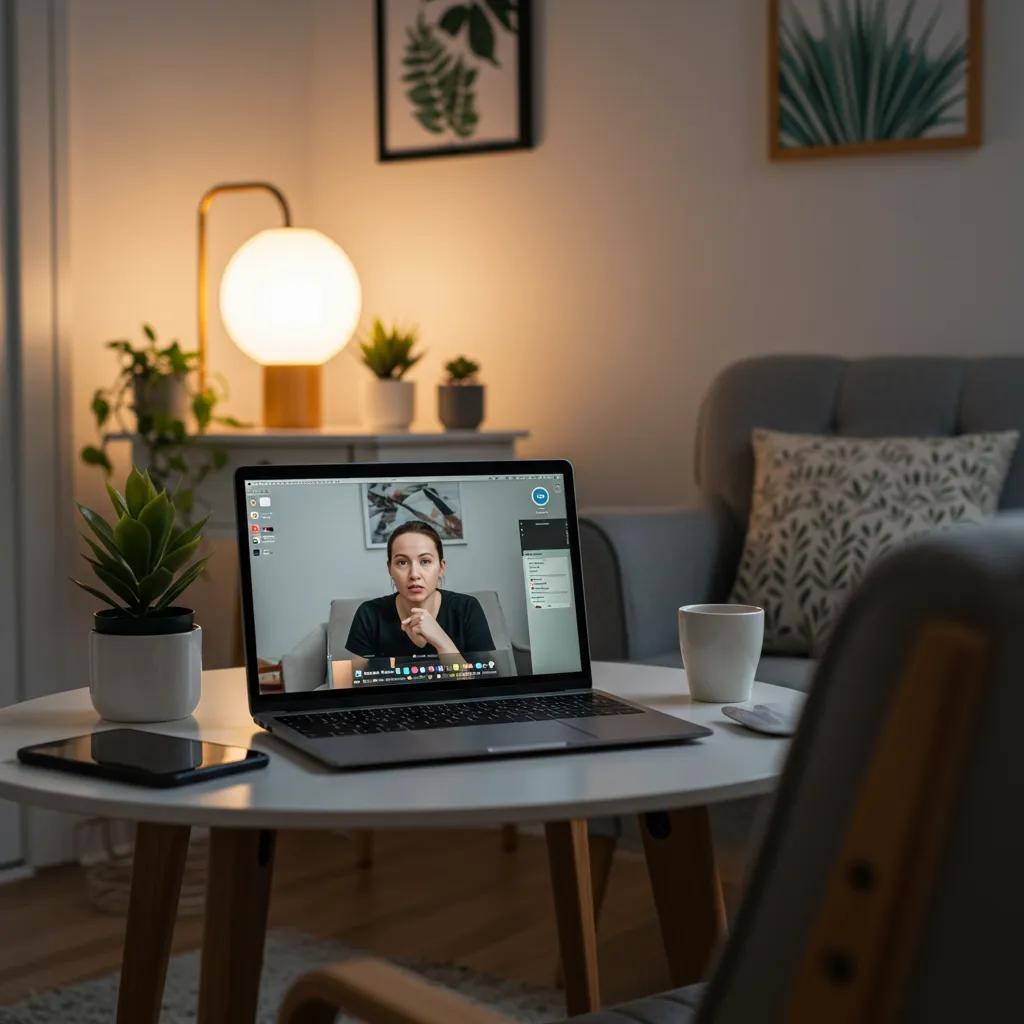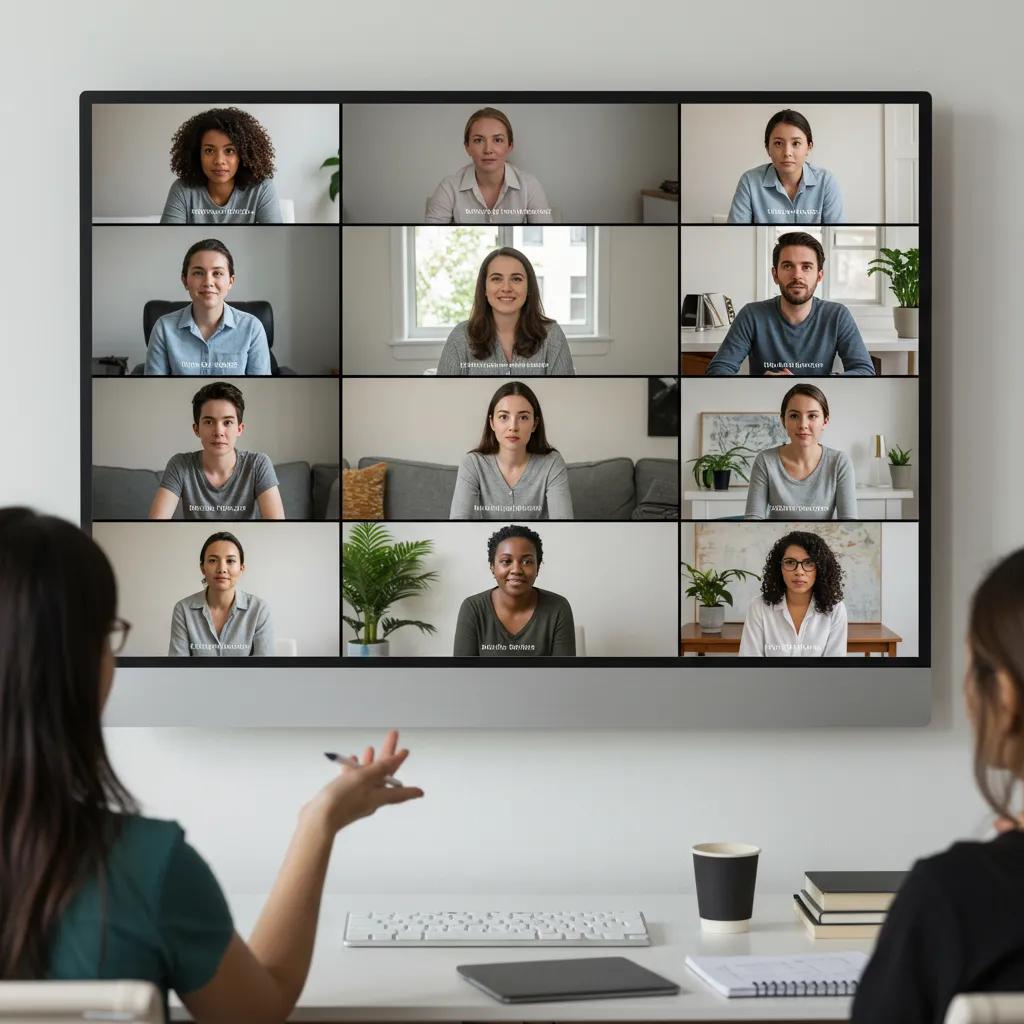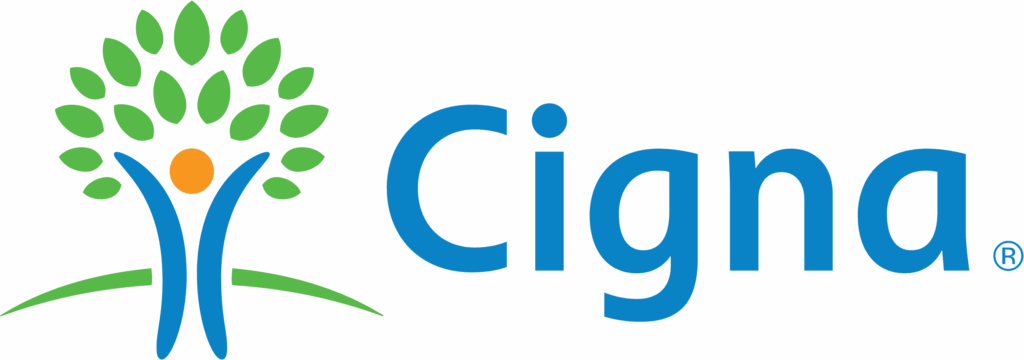In Network With All Major Insurance |

Mental health virtual IOPs (intensive outpatient programs delivered via telehealth) provide structured, evidence-informed therapy that balances clinical intensity with the flexibility of remote access. This guide explains what a virtual IOP is, how virtual intensive outpatient program mental health models work, and why telehealth-based IOPs can expand access and continuity of care for people with moderate-to-severe symptoms. Many readers will learn how virtual IOPs compare to partial hospitalization and residential care, which conditions respond well to online IOP treatment, how addiction services and dual-diagnosis care are integrated, and practical steps for enrollment, insurance verification, and cost planning. The article maps therapeutic modalities—CBT, DBT, ACT, ERP, somatic approaches—onto telehealth delivery, describes technology and privacy expectations, and summarizes outcomes and measurement strategies based on current research. If you need program-specific details after reading, program coordinators can offer a free assessment to determine fit and next steps for virtual IOP participation.
A mental health virtual IOP is an intensive outpatient program that delivers the core components of IOP—structured group therapy, individual sessions, psychiatric medication management, and case management—through a secure telehealth platform to maintain clinical intensity while enabling remote participation. Virtual delivery adapts frequency and duration (for example, multiple weekly group hours and weekly individual therapy) and uses secure video conferencing, interactive activities, and digital homework to achieve therapeutic goals. The result is accessible, measurable treatment that supports symptom reduction and functional recovery without requiring residential care. The next sections define the program elements that qualify an online program as an IOP and compare virtual IOP to other levels of care so clinicians and patients can make informed placement decisions.
An online intensive outpatient program for mental health is defined by its intensity (typically several hours of structured programming multiple days per week), defined clinical goals, and multidisciplinary components delivered remotely to achieve measurable outcomes. Program components include group therapy focused on skills, individual psychotherapy to target personalized goals, psychiatry for medication management, and case management for coordination—each adapted for telehealth workflows and privacy safeguards. The mechanism of benefit is frequent, focused clinical contact that reinforces skill practice and symptom monitoring, producing improved coping and reduced acute crises. Understanding these defining features helps set expectations for weekly schedules, documentation, and outcome measurement in a virtual setting.
Virtual IOP offers more clinical contact than standard outpatient therapy but less than partial hospitalization programs (PHP) or residential treatment, positioning it for individuals who require consistent, structured treatment while living at home. The key comparative mechanisms are intensity (hours/week), setting (remote vs onsite), and level of medical supervision; virtual IOP maintains intensity with remote monitoring and local crisis plans while PHP offers daytime inpatient-like structure and residential care delivers 24/7 supervision. This comparative framework guides placement: stable patients needing robust skills training often benefit from virtual IOP, while those with safety concerns or severe medical needs may require higher levels of care. The following table summarizes typical program components, session lengths, and platform notes to clarify differences.
Different program components map to specific delivery attributes and typical values.
| Program Component | Attribute | Typical Value / Example |
|---|---|---|
| Group therapy | Session length & frequency | 90 minutes, 3–5 times weekly via secure video |
| Individual therapy | Modality & cadence | 45–60 minutes weekly, teletherapy with goal tracking |
| Psychiatry | Medication management | 15–30 minute telepsychiatry visits every 2–6 weeks |
| Case management | Coordination activities | Weekly contacts, community resource linkage via phone/email |
This comparison clarifies expectations for patients deciding among telehealth behavioral health services and other intensive programs, and it leads into benefits of virtual delivery.

Virtual mental health treatment combines clinical rigor with practical advantages that increase engagement and continuity of care for many people. Remote delivery improves access for those in rural or transit-limited areas, supports consistent attendance by reducing travel barriers, and allows treatment to integrate with daily life obligations—factors that commonly improve retention and follow-through. Additionally, telehealth platforms can support real-time symptom tracking and asynchronous tools that reinforce therapy between sessions, strengthening outcomes. Recent studies indicate comparable effectiveness to in-person care for many conditions when programs maintain equivalent intensity and robust clinical protocols, which is promising for patients seeking online IOPs.
Key benefits of virtual IOP:
These benefits make virtual IOP an effective option for many patients, and the next section details which mental health conditions respond well to this model.
Virtual IOP can treat a broad range of mental health conditions by matching modalities to clinical needs and adapting interventions for remote delivery. The mechanism lies in intensive, multimodal contact—skills-based group work plus targeted individual therapy and psychiatric oversight—that addresses core symptom clusters and functional impairments. Conditions commonly treated include anxiety disorders, depressive disorders, trauma-related conditions including PTSD, obsessive-compulsive disorder (with ERP adaptations), bipolar spectrum disorders when stabilized, and many eating disorders and substance use disorders when medical risks are manageable. The following EAV table maps common conditions to recommended virtual IOP modalities and evidence notes to support clinical decision-making.
| Condition | Recommended Virtual IOP Modalities | Evidence / Notes |
|---|---|---|
| Anxiety disorders | CBT, ACT, group skills training | Recent trials show CBT via telehealth reduces symptoms comparably to in-person care |
| Depression | CBT, behavioral activation, medication management | Tele-IOP supports remission when combined with psychiatry and measurement-based care |
| PTSD / Trauma | Trauma-informed CBT, somatic experiencing, group processing | Virtual stabilization and phased exposures can be effective with safety planning |
| OCD | ERP in individual and small-group formats | ERP adapted for telehealth maintains efficacy with careful exposure planning |
| Bipolar disorder | Psychoeducation, mood-stabilization, psychiatry coordination | Appropriate when mood is stabilized; close monitoring for escalation required |
This mapping helps clinicians choose modality mixes; next, the subsections describe condition-specific adaptations and outcomes.
Virtual IOP addresses anxiety and depression by combining evidence-based modalities—CBT, ACT, and DBT-informed skills—and regular measurement to guide treatment intensity. Group sessions focus on skill acquisition (cognitive restructuring, behavioral activation, exposure hierarchies) while individual therapy personalizes targets and addresses comorbidities. Telehealth mechanisms like screen-sharing worksheets, breakout rooms for practice, and app-based homework increase opportunities for repeated practice and therapist feedback. Outcome monitoring using validated symptom scales allows timely adjustments, and many patients see measurable symptom reduction within 6–12 weeks of consistent program participation.
For trauma and PTSD, virtual IOPs emphasize trauma-informed stabilization, grounding, and phased exposure work adapted for online formats, often integrating somatic techniques and mindfulness to manage dysregulation. For OCD, Exposure and Response Prevention (ERP) is delivered both in individual teletherapy and in small, structured exposure groups where therapists guide in-session exposures and assign practical between-session tasks. Safety protocols—such as pre-session risk assessment, emergency plans, and local resource coordination—are essential to ensure exposures are managed safely in remote settings. These modality-specific adaptations preserve therapeutic mechanisms while leveraging telehealth delivery.
Virtual IOP can support bipolar disorder and some eating disorder treatments when clinical risk is appropriately managed and medical or nutritional needs are coordinated locally. For bipolar disorder, telehealth psychiatry provides medication management while psychoeducation and skills groups address relapse prevention and mood regulation; close monitoring for mania or suicidality dictates escalation criteria. For eating disorders, virtual programs incorporate nutrition counseling, medical monitoring partnerships, and family-based interventions where appropriate, but patients with acute medical instability will need higher levels of care. Integrating local outpatient medical teams and establishing clear escalation pathways enables safe virtual care for these populations.
Addiction treatment within virtual IOPs integrates SUD-focused group therapy, individual counseling, medication-assisted treatment (coordinated locally), and relapse prevention planning to address substance use alongside co-occurring mental health conditions. The mechanism of integrated care is collaborative treatment planning that targets both substance-related behavior change and underlying psychiatric drivers, using evidence-based relapse prevention skills, harm-reduction strategies, and community resource linkage. Virtual IOPs can provide structured support during early recovery and coordinate with local providers for medication management, enabling continuity of care. Below are typical service components virtual IOPs offer for substance-related treatment.
Common virtual IOP addiction services:
These integrated services reduce gaps in care and lead into how virtual IOP manages co-occurring disorders.
Services for substance use disorders in virtual IOPs typically include structured group relapse-prevention curricula, individual counseling for readiness and behavioral interventions, relapse monitoring tools, and coordination with local providers for medication-assisted treatment. Telehealth enables frequent check-ins and real-time coping rehearsals during craving episodes, while case managers support housing, employment, and community recovery resources. When MAT is indicated, programs arrange local prescribing or collaborate with teleprescribers under regulatory allowances to ensure medication continuity. These coordinated services support recovery while maintaining remote accessibility.

Virtual IOP manages co-occurring disorders through integrated assessment, unified treatment planning, and combined modality delivery—pairing CBT or DBT for mood and trauma with relapse-prevention skills and medication management when needed. Screening tools identify severity and suicide or overdose risk, informing intensity and supervision levels. Therapists use joint-session strategies to address interactions between substance use and psychiatric symptoms, while case managers handle social determinants that affect recovery. This integrated model reduces fragmented care and improves alignment of therapeutic goals across conditions.
Virtual IOP provides relapse prevention by teaching specific skills—trigger identification, craving management, distress tolerance—and by establishing ongoing supports such as alumni groups, digital check-ins, and scheduled follow-ups. Technology enables brief reminders, symptom monitoring, and quick re-engagement if signs of relapse emerge. The program’s aftercare planning formalizes community supports and step-down care, and periodic booster sessions help consolidate gains. These preventive strategies anchored in skills training and continuity reduce readmission risk and promote long-term recovery.
Virtual IOPs can serve diverse populations by tailoring scheduling, cultural competency, and modality selection to individual needs, making remote IOPs especially valuable for teens, young adults, veterans, LGBTQIA+ individuals, working professionals, and parents. The mechanism of benefit is personalization: matching delivery formats and group compositions to demographic realities—such as school schedules for students or veteran-focused trauma groups—to increase relevance and engagement. Programs that train staff in cultural humility and trauma-informed care further improve outcomes for marginalized groups. The next subsections explore how programs adapt to specific populations.
Virtual IOP suits teens and young adults by offering tech-forward engagement, flexible scheduling around school or college, and family-inclusive options for parental involvement and consent where appropriate. Groups can be age-homogeneous to promote peer relevance while therapists use interactive tools, breakout rooms, and multimedia to hold attention and practice skills. Family therapy components support reintegration to school and home routines, and coordination with school counselors helps maintain academic continuity. These youth-specific adaptations increase participation and functional recovery.
Programs that serve LGBTQIA+ individuals and veterans incorporate culturally competent language, trauma-informed practices, and targeted group offerings that address identity-related stressors and service-related trauma. Therapist training on minority stress models and veteran resources ensures safe group dynamics and relevant psychoeducation. Veteran-specific groups may integrate benefits navigation and peer support frameworks, while LGBTQIA+-focused groups emphasize identity affirmation and community connections. These tailored offerings improve therapeutic alliance and outcomes for specialized populations.
Busy professionals and parents benefit from virtual IOP scheduling options such as evening or weekend groups, confidentiality protocols that respect privacy in work or home settings, and focused modules addressing work-life integration and parenting stress. Programs design concise, skills-based curricula that can be applied immediately and offer asynchronous resources for catch-up or reinforcement. Employer-supported leave coordination and family-friendly therapy components help parents re-establish routines and parenting strategies while participating in intensive care. These logistical adaptations make sustained participation feasible for those with high time demands.
The virtual IOP experience combines structured therapeutic formats, a range of evidence-based modalities, and secure technology plus onboarding that together deliver intensive remote care. Delivery formats typically include multi-hour group sessions, weekly individual therapy, periodic psychiatry, and case management, all coordinated through a telehealth platform that meets privacy standards and supports interactive features. Modalities such as CBT, DBT, ACT, ERP, and somatic experiencing are adapted for remote practice using digital tools and session design changes that preserve therapeutic mechanisms. The following subsections unpack delivery formats, modality adaptations, and technical requirements.
Individual, group, and family therapies in virtual IOP are delivered via HIPAA-compliant video platforms with structured agendas: groups often include 6–10 participants, focused skills teaching, role-plays, and breakout room practice, while individual sessions concentrate on assessment, goal-setting, and targeted interventions. Facilitators use screen-sharing for worksheets, polls for engagement, and guided exercises to replicate in-person experiential work. Family sessions require consent workflows and pre-session agreements to ensure confidentiality and safety, and therapists set clear boundaries for virtual participation to maintain clinical order. These operational details preserve therapeutic integrity online and transition naturally to modality-specific implementation.
Virtual IOPs employ a suite of modalities—CBT for cognitive restructuring and behavioral activation, DBT for emotion regulation and distress tolerance, ACT for values-driven behavior change, ERP for OCD exposures, and somatic experiencing for trauma-related dysregulation—each adapted to telehealth through session sequencing and home-based practice. For example, ERP uses clinician-guided exposures with structured homework and remote coaching, and somatic approaches use grounding and interoceptive exercises suited to guided video formats. Measurement-based care tracks progress with validated scales to inform modality adjustments and maintain treatment fidelity. These modality-specific adaptations enable precise symptom targeting in remote settings.
Successful virtual IOPs rely on secure telehealth platforms, minimum device/internet specifications, onboarding, and technical support so clinical time is maximized and privacy preserved. Platform requirements typically include end-to-end encrypted video, waiting-room controls, and ability to use breakout rooms and screen sharing; patients need a device with camera/microphone and stable internet bandwidth. Programs run tech-orientation sessions and offer live troubleshooting to reduce barriers, while privacy measures—such as encrypted sessions and informed consent about telehealth limits—protect confidentiality. Clear technology support increases participation and underpins clinical effectiveness.
Enrolling in a mental health virtual IOP follows a structured admissions pathway: initial contact and screening, comprehensive clinical assessment, individualized care planning, orientation, and scheduling—each step designed to assess suitability and coordinate logistics. Insurance verification and financial counseling occur early to clarify coverage for telehealth intensive outpatient services, and programs often assist with benefit checks and preauthorization where needed. Payment options may include private insurance, self-pay with sliding scales or payment plans, and referral to financing resources. The table below outlines common insurance/payment scenarios and verification steps to guide prospective participants.
| Insurance Type / Payment Option | Coverage Typicality | Steps to Verify / Expected Patient Cost |
|---|---|---|
| Commercial insurance | Often covers telehealth IOP with preauthorization | Provide program codes, request benefit check, obtain preauthorization if required |
| Medicaid / public plans | Varies by state and plan | Contact plan rep, submit clinical documentation for medical necessity |
| Self-pay / sliding scale | Available for uninsured or limited coverage | Discuss payment plans, sliding scales, and financial counseling options |
| Employer benefits / EAP | May cover partial costs or referrals | Verify EAP policy, obtain referral or authorization as directed |
This guidance helps prospective participants plan financially; the next subsections detail the step-by-step admissions process, insurance behaviors, and cost considerations.
The typical admissions flow begins with an initial contact and brief clinical screen to determine appropriateness, followed by a comprehensive assessment that gathers psychiatric history, current symptoms, risk factors, and social needs. Next, clinicians and the patient co-develop an individualized care plan specifying modalities, schedule, and measurable goals; orientation sessions cover technology, confidentiality, and emergency procedures before active enrollment. Expected timelines are usually a few days to two weeks depending on scheduling and insurance verification. Clear documentation and collaborative planning reduce delays and align expectations before treatment begins.
Insurance coverage for virtual mental health IOPs has expanded in recent years but varies by plan and jurisdiction; many commercial insurers and some public plans cover telehealth IOP when medical necessity is demonstrated and preauthorization is obtained. Verification steps include obtaining program-specific billing codes, submitting clinical documentation, and confirming in-network status or out-of-network benefits. Recent trends from 2023–2025 show growing insurer acceptance of telehealth-intensive services, but patients should request benefit checks and ask program coordinators for assistance with verification to avoid unexpected costs.
Typical costs for virtual IOP depend on intensity, inclusion of psychiatry or medication management, and whether case management is part of the package; programs often offer sliding scales, payment plans, and financial counseling to address affordability. Key cost drivers include number of weekly hours, specialist involvement, and required adjunct services like medical monitoring or local MAT coordination. Patients seeking clarity should request an itemized estimate and discuss payment options with program staff; transparent financial planning reduces barriers to enrollment and supports sustained participation.
Typical steps to verify insurance and plan financially:
These steps streamline enrollment and lead into outcome expectations for virtual IOP participants.
Virtual mental health IOPs demonstrate measurable outcomes across symptom reduction, retention, and functional improvement when they replicate the intensity and clinical protocols of in-person IOPs. Effectiveness is assessed using symptom rating scales, program completion and retention metrics, relapse or readmission rates for addiction, and longitudinal follow-up data that track sustained gains. Recent studies from 2023–2025 report comparable short-term outcomes between virtual and in-person IOPs for many diagnoses when programs maintain fidelity to evidence-based modalities and robust measurement-based care. The following table highlights common outcome measures used to evaluate virtual IOP effectiveness.
| Outcome Measure | Description | Typical Use in Virtual IOP |
|---|---|---|
| Symptom rating scales | Standardized instruments (e.g., PHQ-9, GAD-7) | Baseline and periodic tracking to guide treatment |
| Retention / completion rates | Program attendance and graduation metrics | Indicator of engagement and program acceptability |
| Readmission / relapse rates | Re-entry to higher levels of care or substance relapse | Used for aftercare planning and quality improvement |
| Functional outcomes | Work/school performance, social functioning | Longitudinal follow-up to assess real-world gains |
These measures allow programs to quantify impact and inform continuous improvement; below are additional perspectives from testimonials and long-term benefits.
Anonymized client narratives and aggregated themes commonly report improved daily functioning, enhanced coping skills, and sustained sobriety or symptom reduction as frequent outcomes of virtual IOP participation. Testimonials often highlight convenience and consistent access as factors that supported adherence and recovery, while many describe the value of group connection even in remote formats. Ethical use of testimonials requires corroborating measured outcomes and protecting confidentiality, but patient-reported experiences complement clinical metrics and illuminate lived benefits. These qualitative patterns align with empirical measures discussed next.
Effectiveness is measured through a combination of validated symptom scales, retention and completion statistics, relapse/readmission tracking for addiction, and periodic functional assessments that capture employment or schooling outcomes. Programs implement measurement-based care by collecting baseline and interval scores, using those data to adjust treatment plans and to evaluate modality effectiveness across patient cohorts. Longitudinal follow-up—at 3, 6, and 12 months—helps establish durability of gains and informs aftercare planning. These systematic measurements support transparent outcome expectations for prospective participants.
Long-term recovery benefits of virtual IOP include improved access to follow-up care, easier maintenance of peer and alumni supports, and scalable booster sessions that reinforce relapse prevention skills over time. Continuity of care enabled by telehealth reduces barriers to re-engagement if symptoms recur, and technology-enabled check-ins help sustain behavioral changes. Programs that integrate community resources and structured aftercare plans increase the likelihood of sustained functional improvement, and individuals who complete well-designed virtual IOPs often report longer-term stability when supported by ongoing peer and professional connections.
Virtual IOP supports trauma-informed care by implementing safety planning, phased exposure, and grounding techniques adapted for telehealth while ensuring staff training in trauma sensitivity and cultural humility. Trauma-informed virtual work emphasizes choice, collaboration, and empowerment, using clinician-guided somatic and mindfulness practices suited to remote delivery. These strategies reduce re-traumatization risk and enable stabilization prior to deeper trauma processing, connecting naturally to modalities and technology considerations described earlier.
Virtual IOP differs from partial hospitalization programs primarily in supervision level and setting: PHPs provide daytime, intensive clinical programming often in-person with closer medical oversight, while virtual IOPs deliver similar therapeutic intensity remotely with protocols for local emergency coordination. The choice depends on clinical stability, medical needs, and living environment; virtual IOP offers greater flexibility and access, while PHPs serve those needing medical observation or higher intensity. This distinction informs placement decisions outlined in earlier comparative guidance.
Medication management is incorporated via telepsychiatry visits scheduled alongside therapy components, with coordination pathways to local prescribers or pharmacies when in-person labs or monitoring are required. Telepsychiatry uses brief, focused visits to adjust medications, monitor side effects, and coordinate with therapists to ensure integrated care. Programs establish clear protocols for urgent medication concerns and emergency escalation, supporting safe pharmacologic management in the remote model.
Minimum technology requirements typically include a smartphone, tablet, or computer with camera/microphone, reliable internet connectivity, and a private space for sessions; programs often provide tech-orientation and troubleshooting to ensure accessibility. Privacy practices include encrypted sessions, informed consent about telehealth limits, and guidelines for secure participation. Adequate technology and support reduce session disruptions and enhance therapeutic engagement, leading into family involvement options.
Family members can engage through scheduled family therapy sessions, psychoeducation groups, and structured involvement in treatment planning with appropriate consent and confidentiality agreements. Virtual platforms allow multi-party sessions and flexible scheduling that accommodate caregivers, increasing family support for recovery and skill generalization at home. These family-inclusive practices strengthen outcomes and help sustain changes beyond the program timeframe.
This article has provided a comprehensive, modality-specific, and practical roadmap to mental health virtual IOPs, covering definitions, conditions treated, integration of addiction care, target demographics, therapy modalities, technology requirements, enrollment logistics, and outcomes. If you are considering virtual IOP for yourself or a loved one, program coordinators can offer a free assessment to determine fit, verify insurance or payment options, and outline individualized next steps.
Clinician-Related Factors in Virtual Versus In-Person Outpatient Substance Use Disorder Treatment
ABSTRACT: The clinician’s role has been investigated as a potential mediator of treatment delivery and patient outcomes in both mental health and substance use disorder (SUD) treatment settings [1-3]. Before the mandated shift to virtual services due to the COVID-19 pandemic, the impact of clinician-level characteristics on treatment outcomes was primarily assessed within the context of in-person care, creating a significant void in understanding the rapidly evolving landscape of virtual treatment delivery. Historically, virtual services were more prevalent in the treatment of general mental health disorders than for SUDs [4-6]. In March 2020, addiction treatment programs were compelled to rapidly expand their use of telehealth services, often without prior experience or formal staff training in delivering virtual treatment. While the delivery setting is a critical determinant of SUD treatment accessibility, retention and outcomes are paramount factors contributing to the quality and
Association between clinician-level factors and patient outcomes in virtual and In-person outpatient treatment for substance use disorders: Multilevel analysis, MJ Parks, 2023
We are 100% in Network Provider. Most of our clients pay $0 out of pocket.



